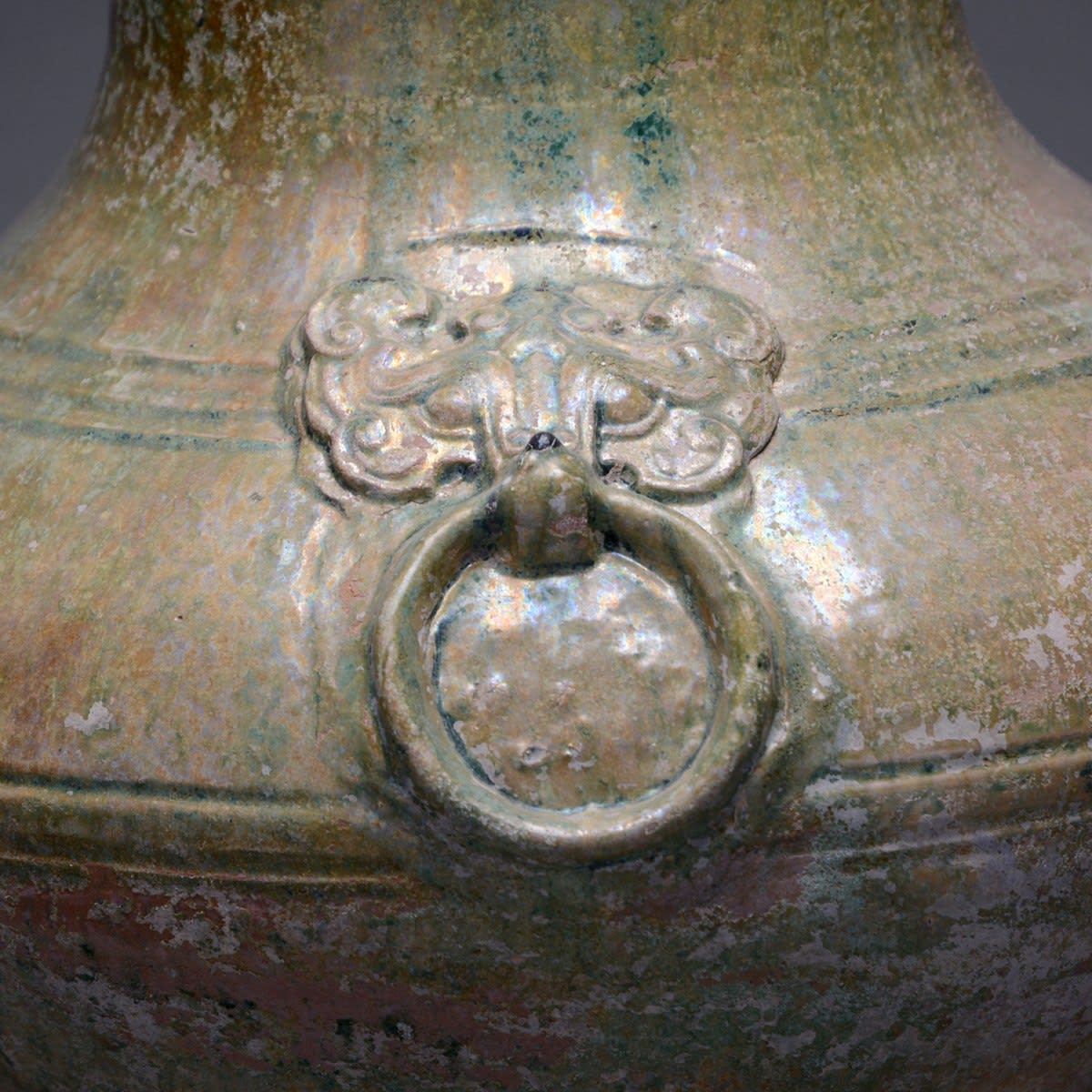Han Green-Glazed Hu, 206 BCE - 220 CE
Glazed Terracotta
height 41.9 cm
height 16 1/2 in
height 16 1/2 in
H.812
Further images
Green and brown glaze vessels of the Han Dynasty are generally based on bronze predecessors but feature distinctive variations that are quite pleasing. This green-glazed is notable for its elegant...
Green and brown glaze vessels of the Han Dynasty are generally based on bronze predecessors but feature distinctive variations that are quite pleasing. This green-glazed is notable for its elegant simplicity. Three parallel bands rendered in low relief decorate the surface of the exterior at the join of the neck and the shoulder. These bands serve to divide the vessels into segments that create a nice visual flow to the piece. Two purely decorative Tao Tieh mask handles intersect these bands. These stylized animals represent a type of dragon found in Chinese mythology. The gorgeous green glaze recalls similar works in bronze, and the glaze has acquired a beautiful, soft iridescent patina over the ages. Commonly referred to as “silver frost,” this iridescence is the result of wet and dry periods in a tomb whereby the clay dissolves the lead glaze and redeposits it on the surface, where it hardens. A testament of age, this patina is also admired by collectors for its charming aesthetic qualities, similar in effect to mother of pearl. Although this vessel would have functioned as a wine container in life, it was found discovered buried in a tomb. A symbol for the bountiful pleasures of life, for drinking and feasting, this would have represented the joys to be experienced in the afterlife and the feasts and celebrations yet to come. Today, this vessel is not only a gorgeous work of art, treasured for its history and rarity; but also a stunning reminder of the richness and luxury of the Han Dynasty, both in this world and the next.







